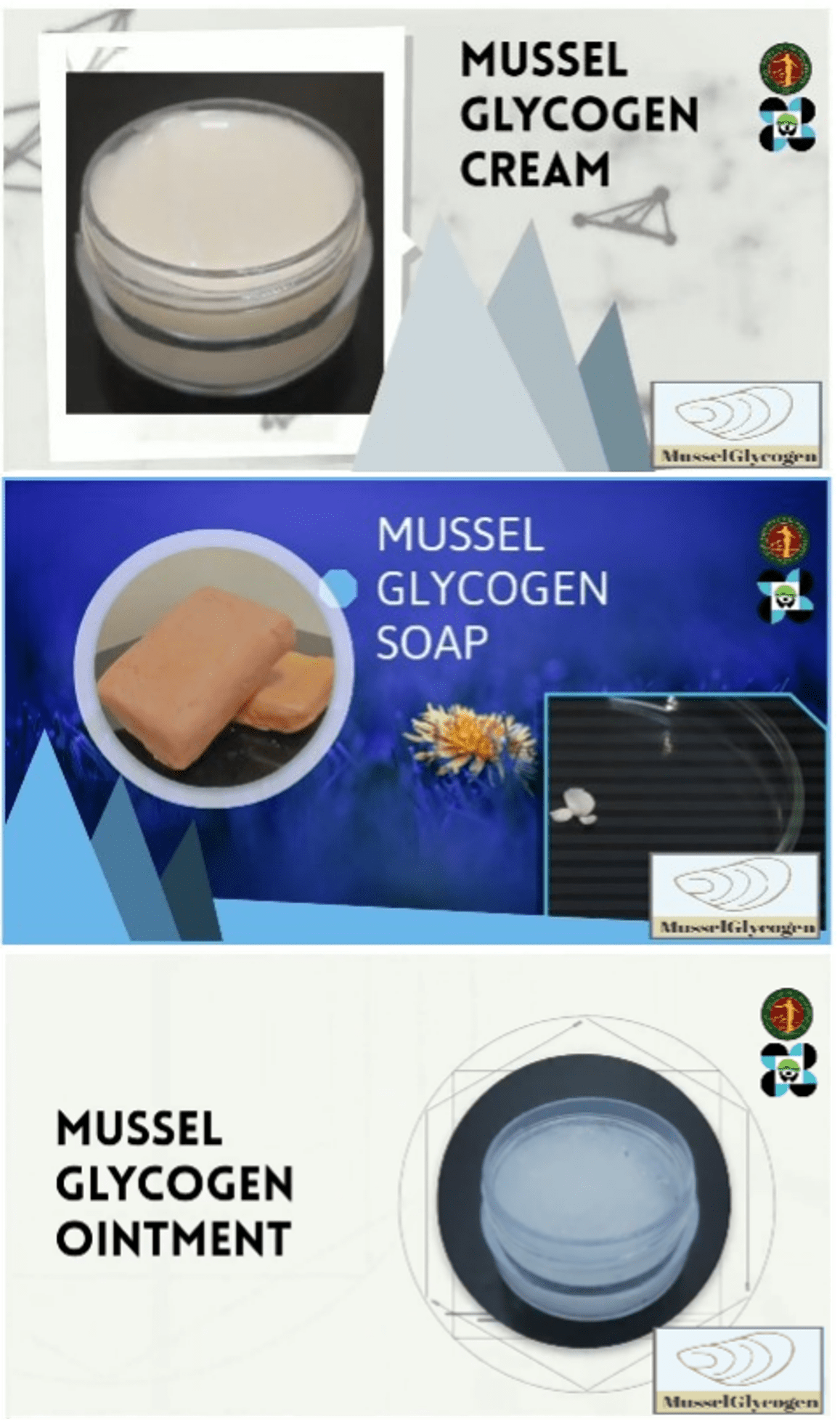
Green mussel (Perna viridis) is one of the emerging aquatic commodities that is poised to contribute to the economic output of the fisheries sector in the country. Aside from using mussel as food, a project has recently used food grade mussel glycogen extracts in the development of cosmetic products.
The project, “Extraction and Utilization of Mussel Glycogen under the Mussel Biotechnology Program” was implemented by the University of The Philippines Visayas – Tacloban Campus, in collaboration with the Philippine Council for Agriculture, Aquatic and Natural Resources Research and Development of the Department of Science and Technology (DOST-PCAARRD). Two other mussels, black mussel (Mytella strigata) and the brown mussel (Modiolus philippinarum) were included in the study.
Cosmetic products (cream, ointment, and soap) from food grade glycogen extracts and a laboratory grade glycogen for biotechnology purposes were formulated. The lab-grade glycogen was proven to be effective as a carrier in nucleic acid extraction when used in standard PCR techniques.
To support the project in terms of its marketability, a feasibility study on the market operations (production, organization, management) of the developed glycogen found that it is feasible to manufacture this product. Results of the financial analysis are very encouraging with the 193.95% Internal Rate of Return (IRR) and 1.70 Benefit-Cost Ratio (BCR). The IRR is the expected growth rate of an investment per year (ave: 22%) while the BCR is the correlation of the relative costs versus the benefits of a proposed project in which a value greater than 1.0 will mean a positive net present value.

Research on non-food applications of mussel was urged as mussel production is faced with the perennial occurrence of harmful algal blooms (HABs). HABs displace fisherfolk for months and recorded economic losses that can reach P250 million (M) per occurrence of HAB.
In the province of Samar in Region VIII alone, P49M is derived annually from the 'tahong' industry.
